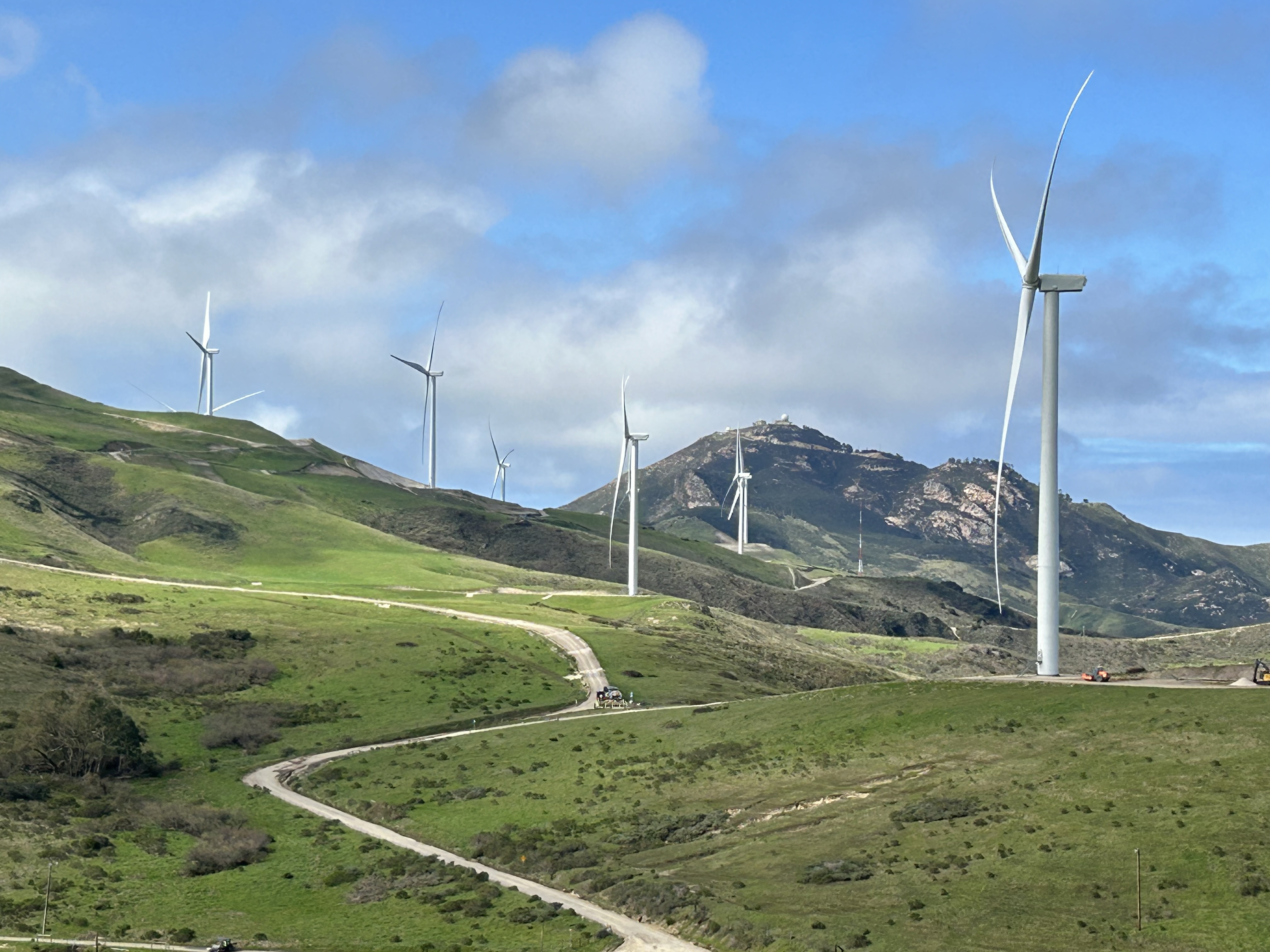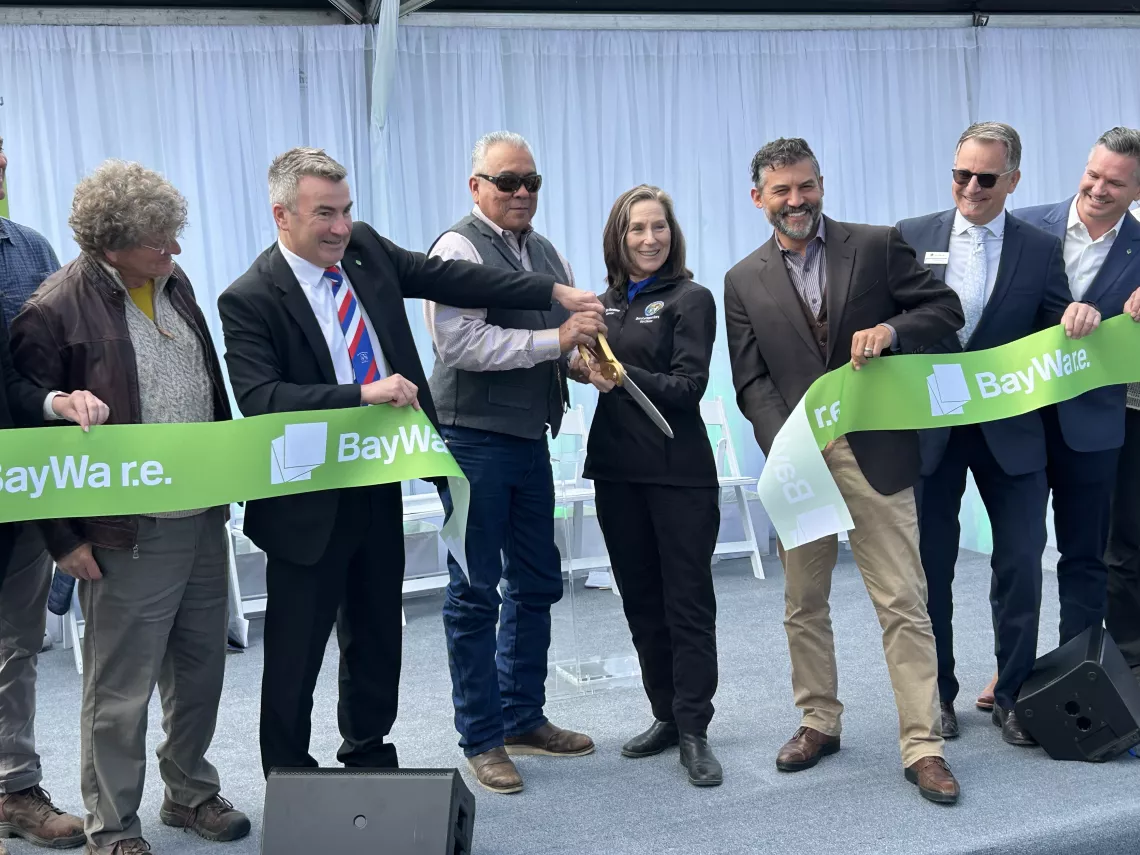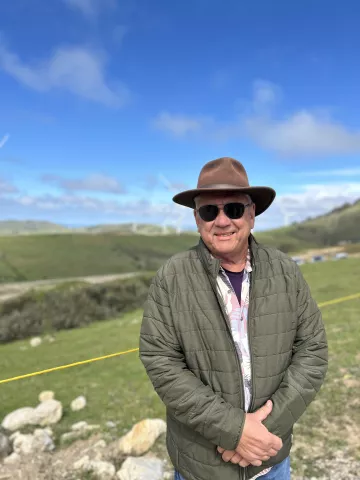By Jonathan Ullman, Director of Sierra Club Santa Barbara-Ventura Chapter
Just outside Lompoc, our mini-bus swerved around the “Road Closed” sign and ascended the mountain. Our driver chose The Girl from Ipanema and other Brazilian jazz standards for the ride to the coast. The press had focused on our destination for years, but few in the public had seen it. The Strauss Wind Farm, the first coastal wind project in California, would soon officially open.
As we got off the bus, a bitter wind pierced through my two thin jackets. I hummed The Girl from Ipanema futiley.
Sierra Club Santa Barbara Group Chair Jim Taylor and I were among scores of engineers, ironworkers, politicians, residents and environmental activists gathering on this mountain outside the City of Lompoc in northern Santa Barbara County.
In front of us stood a white turbine 50-stories-tall from the base to the highest blade. There were 27 turbines in the wind farm, each appearing large or small depending on its distance. Each turbine supported three 22-story-tall blades that looked like the Mercedes emblem without the circle.
It took some time to process the scene. The wind turbine next to the pavilion loomed over us – you could feel its power and its presence. You could almost imagine Ancient Aliens offloading them. But this was a strictly-human endeavor taken by a German company called BayWa r.e.
It took them more than a year to transport each turbine, each blade on flatbeds from CA Hwy 101, through the streets of Lompoc and up the same windy path just taken by our minibus.
Despite the noisy wind, these giants rotated in stone silence.

Their white curved blades looked like wings, almost organically-inspired. These were not the square-edged windmills found in the neighboring Danish-themed City of Solvang. These bore no resemblance to the desert turbines seen off I-10 outside Los Angeles. These were taller, fewer in number with an elegance to them. Their blades gracefully revolved through passing clouds and patches of blue sky. When I looked up at the blades, it felt as if the ground around me had shifted position and that I was untethered from the earth.

“This is the right place to build a wind farm. It’s very windy,” said Gordon McDougall, CEO of BayWa r.e. Wind Americas.
McDougall’s journey here started with a photo in the 4th grade in Scotland. His teacher had just taken a sabbatical to Santa Barbara and during the following year described the area in detail to her class. Using maps and photos, she led the children in projects related to the area. His teacher read the Island of the Blue Dolphin, a historical-based story about a Chumash girl abandoned on one of the Channel Islands. Later he would read his own children the famous story. He dreamed of visiting California. Later he and his family would relocate here as he oversaw the company’s wind energy operations.
It’s hard to imagine the whole thing might not have happened at all. The first effort came from a company called Acciona in 2009. A decade later the Santa Barbara County Board of Supervisors granted new owners BaWa r.e. approval to move forward. The project had challenges: a hold-out rancher, the protection of endangered plants and raptors and labor negotiations.

Sierra Club Santa Barbara Ventura Chapter backed the project because it provided substantial clean power for its limited footprint. The Chapter felt that if it was designed right, the harms could be kept to a minimum. In fact, AI has made these turbines smarter, allowing them to reduce bird strikes and shift positions to better harness the wind.
“Wind farms like this are a sign of real human progress, though it is somewhat ironic; for hundreds of years windmills have been known to produce energy, without polluting the atmosphere like petroleum, said Jim Taylor, Sierra Club Santa Barbara Group Chair. “It’s time to stand up against the oil companies, like hundreds of feet up in the air!”
Others agree. Joan Hartmann, the County Supervisor for a district that covers Lompoc and Goleta, said her vision is to “harvest the power in a world in which clean energy is the norm, not the exception.”
“We are getting in the game on alternative energy,” said South County Supervisor Das Williams, a long-time clean energy proponent. “This project is the first, but it won’t be the last.”
Op-Ed’s are written by community members, not representatives of edhat. The views and opinions expressed in Op-Ed articles are those of the author’s.
[Do you have an opinion on something local? Share it with us at info@edhat.com.]















